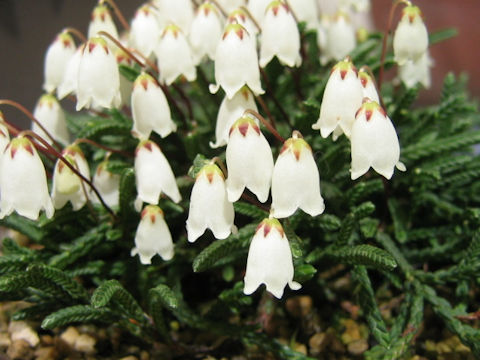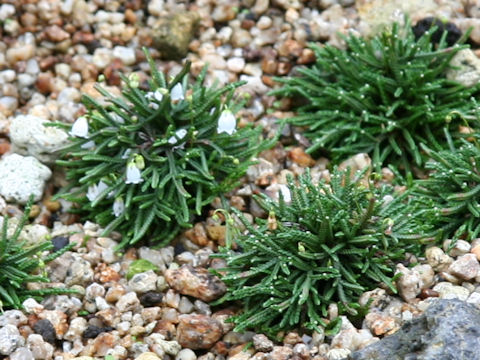 |










|

|
íªÌ{BAnûÈk©çkC¹A»êÉçñâTnAJ`bJ¼ÉªzµÄ¢Ü·BRÑâ¦ânɶ¦A³ÍT`POZ`ÙÇÅ·BsÍRóÅnÊð¢AØÐóÌtª§
µÜ·BV©çW²ëAtãü©çÔ¿ðLεĬ³È¢Ôð穹ܷBÔ¥ÍÞàóÅAæ[ªóTôµÜ·B
|

|
ccWÈCqQ®ÌíάáØÅAw¼Í Cassiope lycopodioidesBp¼Í èܹñB
|

|
The "Iwa-hige" (Cassiope lycopodioides) belongs to Ericaceae (the Azalea family). It is an evergreen shrub that is distributed from the Chubu region of Honshu northward to Hokkaido in Japan, as well as the Kuril Islands, Sakhalin, and the Kamchatka Peninsula. It grows in alpine zones and cold regions, and is 5 to 10 cm tall. The stems are cordate and crawl on the ground, and the scaly leaves are closely packed together. The corolla is bell-shaped with five shallow lobes at the tip.
|

|
[ãEP`Q] ê§l¼sul¼ÎÔvÉÄA2004N0411úBeB
[REº] åãsß©æuçâ±ÌÔÙvÉÄA2006N1129úBeB
|






